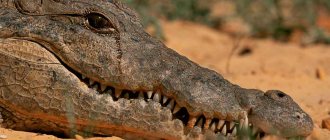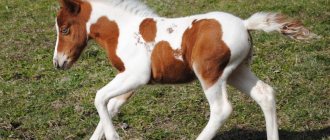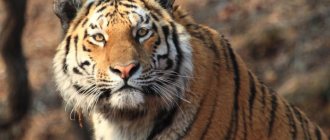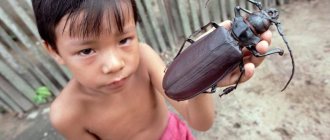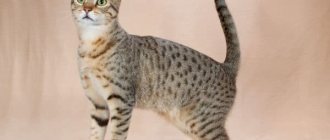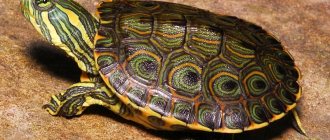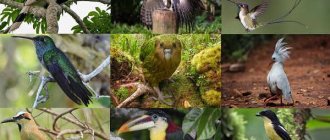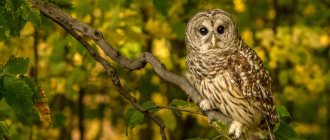Home » Interesting collections about animals
Birds are amazing creatures. Among them there are both giants like the African ostrich, weighing more than 100 kilograms, and very small ones. Let's find out which birds are the smallest.
- 2 Shortbeak
- 3 Buffy hummingbird
- 4 Kinglet
- 5 Wren
- 6 Green Warbler
- 7 Fan-tailed cisticola
- 8 Banana Warbler
- 9 King's finch
- 10 Horned Hummingbird
Tropical parula (Setophaga pitiayumi)
The small, 78-gram short-tailed warbler is primarily found in southern Mexico, the forests of Central and Latin America, and the mossy forests of southern Texas. The bird is blue-gray on top with a green back, yellow-orange throat and chest. Wings with two thick white stripes. Unlike the male tropical parula, the females appear slightly duller. The beak is sharp, black above, yellow below.
There are 14 subspecies of tropical parulas in the world. All subspecies differ in color and size (from 11 to 15 cm). The main products in their diet are insects, spiders and berries.
Migration to cold regions
Some hummingbirds migrate to mountain rock formations located in Canada while the snow cover has not yet melted. At the same time, the temperature of the laid eggs is successfully maintained by the birds at 25 degrees. This is warmer than the ambient temperature. How does this happen?
The fact is that hummingbirds are birds that easily adapt to fairly low temperatures thanks to a unique feather barrier. They have the largest number of feathers per inch of body compared to other birds (excluding representatives of large species). In addition, hummingbirds are able to lower their metabolism into a state of lethargic sleep in order to conserve energy. Before migrating, they accumulate a significant amount of fat. Thus, it makes up 72% of the bird’s total weight. Not every bird can accumulate such an amount of energy reserve, because this requires special adjustment of physiological mechanisms. Scientists have found that hummingbirds have the most metabolically active liver in the world. Another important feature is the high rate of glucose delivery. This is an invaluable characteristic for a living creature whose main food is nectar.
American Siskin (Carduelis tristis)
This small migratory bird is widely distributed throughout much of North America. American Siskins prefer forest edges, plains, fields, floodplains and orchards. They are often attracted to areas with high concentrations of thistles, aster and other foliage plants.
Their size ranges from 11 to 13 cm in length and from 11 to 20 grams in weight. Females are slightly duller than the colorful males. Male siskins are bright yellow during the breeding season. They have yellow or gold feathers around the throat, upper back and belly. Their wings, tails and crowns are glossy black. You can also see white spots above the tail, which usually appear on males after molting and in their summer plumage. American Siskins have conical, pointed beaks that are ideal for eating seeds, weeds and even pine cones.
American Siskins are diurnal and usually gather in small groups. They exhibit the typical undulating flight of finches. American Siskins are nomadic, often settling in place for short periods of time before moving on again. During the winter, they migrate from the southern Canadian border to the United States and Mexico.
Nutrition
A hummingbird is a bird, the description of its life activity is somewhat different from our usual idea of the way of life of birds. First of all, it is interesting that the main food for them is nectar, which they independently extract from flowers. Hummingbirds are able to hover in the air above a flower, making up to 80 wing beats in one second. Such a strenuous flight takes a lot of strength and energy, so if possible, the birds sit on a flower to drink nectar.
However, it is incorrect to believe that this is the only food product for these birds. For many species of hummingbirds, the main food (for some of them even exclusive) is small insects. Sometimes they eat prisoners of the web.
A hummingbird is a bird that spends a colossal amount of energy when flying, so it is forced to feed frequently. During the active period, food intake occurs every 10 minutes. It turns out that in a day these crumbs eat an amount of food that exceeds the weight of their own body.
Banana Warbler (Coereba flaveola)
The small and colorful banana warbler is found primarily in Central and South America. The birds are most common at low altitudes and less common in high mountain forests. Large populations are present in open grasslands, open woodlands, dense tropical rainforests, and even some desert areas. There are 41 recognized subspecies of these birds in the world. The size of the bird varies among different subspecies from 10 to 13 cm.
Banana warblers have black-grayish upperparts and bright yellow underparts. They have a thin, curved beak that is dark in color. A long white eyebrow is located just above the eye, and a white patch is visible on their usually black wings.
Tiny banana warblers are very active birds that tend to be solitary and nomadic. They make no claims to individual territories. Both male and female banana warblers build their own ball-shaped nests using leaves, grass and plant fibers before the breeding season begins. Banana warblers are often compared to hummingbirds because their sharp, curved beaks are excellent for extracting nectar from flowers. They also enjoy eating many types of fruit, including ripe bananas, insects and other small arthropods.
Where do hummingbirds live?
Photo: Hummingbird small bird
Hummingbirds are native to the New World. They have long settled in South, North and Central America. Most species are found in tropical and subtropical regions and the Caribbean islands. Numerous colonies are found in mid-mountain areas and only a few species are seen in temperate latitudes.
Often, the range of some species covers one valley or slope, while other representatives of the genus have habitats that stretch in a narrow strip along the eastern or western slope of the Andes; there are also many island endemics.
The richest area for various species of hummingbirds is the zone of transition from the mountains to the foothills at an altitude of 1800–2500 m with a constant daily temperature of 12–16 °C. The rich flora is represented by creeping plants, shrubs, ferns, orchids, trees, bromeliads, etc. Hummingbirds in this area have a wide variety of body sizes and beak shapes.
Curious! Hummingbirds are very intelligent and are able to remember places and individuals from year to year.
The tiny hummingbird can fly an impressive 2,000 miles to migrate, sometimes traveling up to 500 miles continuously. They usually fly south in winter and north in summer. To accomplish this incredible migratory feat, they feed heavily and double their body weight.
Ruby-throated hummingbirds have the largest breeding range of any North American species. The black-chinned hummingbird is the most adaptable species in North America. Found from deserts to mountain forests and from urban areas to pristine natural areas.
Mexican Siskin (Spinus psaltria)
Mexican Siskins are small, stocky birds with short, round beaks and rounded, serrated wings. They are mostly blue-black in color with a yellow belly. These birds are found in Mexico, the southwestern United States, Honduras, Guatemala, and parts of northern South America. They prefer temperate and tropical habitats, although they can live in deserts, mountains and forested areas.
The size of the tiny bird ranges from 9 to 11 cm, weight – from 6 to 11.5 grams. Due to their wide geographic range, there is some variation in their morphology depending on habitat. Mexican siskins are very sociable. They can often be seen in flocks of 4 to 6 individuals. These flocks fly together and feed together. Mexican siskins also frequently interact and share habitats with other similar species of small birds, especially American siskins.
The smallest birds in Russia
A large number of birds also live on the territory of the Russian Federation, the size of which is in the range of 8-10 cm, and their body weight does not exceed 5-8 g. Most of them are migratory, living in Russia only in the summer, and for the winter they go to southern countries where the climate is milder and weather conditions do not require large energy costs for heating.
The following smallest birds on Earth live in the forests, mountains and steppes of the Russian Federation:
- small flycatcher - its body length is only 12.5 cm, and its weight is about 9 g, lives in the southern regions of Russia, prefers deciduous forests, feeds on small insects, as well as currants, wild raspberries, blackberries, elderberries, strawberries;
- pika - weighs no more than 8.5 g, and its body length does not exceed 14 cm, distributed throughout the Russian Federation, as well as in other countries of the world, its habitat covers an area of the globe of 10 million square meters. km. (moves along tree trunks, walking with its paws from the root to the crown, collecting invertebrate insects);
- The warbler is a nimble and secretive bird that weighs 8 g and also has a body length of 13 cm, is painted in dull gray shades, which provides it with excellent camouflage on tree trunks, prefers to live in the southern forests of Siberia, as well as in deciduous groves of the central part of the Russian Federation ;
- The Warbler is a small bird that lives in the forests of Russia with a temperate and continental climate, its weight ranges from 4 to 9 g, and its body size from tail to tip of beak is 10 cm, omnivorous, as it feeds on vegetation, weed seeds and insects (most often found in coniferous forests, and this bird species is practically not represented in Western Europe).
Photos and names of small birds that are common in Russia can be found in scientific encyclopedias, magazines and textbooks devoted to avifauna.
Despite the small size of birds, which were described in the sections above, they are living creatures with a high degree of organization. In addition, most small birds lead a predatory lifestyle, and their diet is dominated by insects, worms, and aquatic invertebrates.
Article design: Mila Friedan
Golden-headed cisticola (Cisticola exilis)
These tiny birds are found everywhere from India to Australia. They prefer wetlands, agricultural lands and riparian habitats. Their body length is only 10 cm, and their weight is about 8-10 grams. Males have a golden crown, throat and chest. During the mating season, their plumage acquires even more colorful shades. Females have dark brown upperparts and creamy underparts.
The golden-headed cisticola has been nicknamed "the best tailor among birds." To form a perfect round nest, she sews together leaves and grass with gossamer threads. The Golden-headed Cisticola is an omnivore, with a preference for insects, small slugs and seeds.
Behavior and habitat
In addition to their unusual appearance, hummingbirds are distinguished by their character. They are mischievous, brave, fearless and gambling.
Despite this, they are solitary and rarely form flocks. In such groups, each bird will show its own character traits and personality. Because of this, conflicts and quarrels often arise.
Verdin (Auriparus flaviceps)
Verdin, or American remez, inhabits the desert regions of southwestern North America. These birds have ash gray upperparts and pale gray or white underparts. The head is yellow with dark lores. There is a burgundy patch on the shoulders. Males are generally brighter than females. The tail of both sexes is short and rounded.
The weight of the bird varies from 6 to 8 grams, and the length - from 9 to 11 cm. Males lead a solitary lifestyle and tolerate other males within 0.5 km of their territory. Verdin is one of the last to wake up in the morning and the first to settle down for the night in the evening. They nest in bushes and thorny thickets with few trees. Their nests are spherically interconnected bulky twigs and branches, framed by feathers, grass and hair. They are often spotted searching for insects among shrubby plants. Verdin supplements its diet with nectar, fruits and legume seeds.
"Family life"
Hummingbird nests are made from blades of grass, cobwebs, hairs and pieces of bark. The size of the “home” depends on the size of the bird itself. Some of them have nests the size of a cup in diameter, while others have nests the size of a walnut shell.
In such a “house” the hummingbird lays 2 eggs, the size of which is no larger than a pea. The diameter of the eggs is only 12 mm, the weight is no more than 0.5 g.
It must be said that the hummingbird is a very brave and courageous bird; in case of danger, it fearlessly stands up to protect its chicks and quickly flies to the enemy. The desperate mother plunges her sharp beak into the nose or eye of the attacker.
It is noteworthy that hummingbirds do not form pairs. The females are solely responsible for caring for the offspring. At the same time, she remains alone, from the moment the nest is built until the chicks are fed.
Brown Gerygone Mouki
The brown gerygone, also known as the brown warbler, lives in the coastal and montane rainforests, wet gullies and mangroves of eastern Australia. This is one of the smallest birds of the passerine family. It grows to a maximum of 8-10 cm in length and weighs about 6 grams.
The brown gerygone has an olive-gray upperparts and a creamy underparts. He has a long white eyebrow and red-brown eyes. The tail stripe is dark and the tips of the tails are white. Brown heryons are usually found in pairs or small groups of three or four individuals. They spend most of their time on the tops of trees, among the foliage of which they try to catch flying insects. Brown heryons build a nest with a rounded dome and tapering "tail" from roots, plant fibers, spider webs, moss and lichens. The nest is suspended from a low branch or vine. It is noteworthy that both parents feed the young.
Interesting facts about hummingbirds
Hummingbirds have many nicknames: “topaz”, “flying”, “emerald neck”, “fire topaz”.
But if someone wants to buy it and train it, then they should think carefully about making such a decision. Like any other representative of wildlife, this bird always needs freedom in order to live a full life. But, unfortunately, it is impossible to create all the necessary conditions for their normal existence at home. Therefore, conditions can only be created in natural parks , but then you will need to take care of their nutrition, which is quite difficult.
Rainbow bird (Pardalotidae)
Measuring just 8-10cm, this tiny Australian bird is native to the east coast, southeast and southwest of Australia. This wide range is home to numerous populations and subspecies of rainbow birds. Even though these tiny birds weigh 6 grams, some populations undertake long migratory movements, while others remain in one area throughout the year.
Rainbow birds are some of the most colorful birds in the world. They have white eyebrows with a yellow patch in front of the eye, an olive-gray back, and a white stripe/dots on their black wing. The underparts and head have colorful olive green plumage. Both male and female are similar in plumage. Juveniles are also similar to adults, but noticeably paler, especially on the top of the head and face.
Their small size allows them to crawl into small burrows in eucalyptus trees to hunt lerpas and a variety of other insects and their larvae. Feeding occurs in small groups. During the breeding season, rainbow birds build nests close to the ground, usually in a hollow tree or a tunnel dug into an earthen bank; small holes in artificial objects are also often used by them. Both parents and other members of the group help with feeding the young.
Rating of the smallest birds in the world
Among the huge variety of living creatures of the wild, there are the smallest representatives of the bird kingdom. Their size is so tiny that they resemble small insects like dragonflies. Below is a rating of the smallest birds living in different parts of planet Earth.
hummingbird bee
This small bird was first discovered and studied by naturalist H. Gundlach in 1844, a Cuban-German by birth. The bee hummingbird is so tiny that its size does not exceed 5.7 cm in length.
The bird weighs no more than 2 g. The body of the bee hummingbird is lighter than a single ostrich feather.
The bird moves a lot as it feeds on pure flower nectar. To fly around all the flowers in the area, her heart beats at a frequency of 300-500 pulsations per minute.
Photo of the Bee Hummingbird - the smallest bird in the world
This is an endemic species that is found only on the island. Cuba. It lives exclusively in dense tropical forests, which are rich in floral vegetation and vines. Also widespread in the marshy areas of Zapata, Matanzas province (Cuba Island).
For the normal development of bee hummingbirds and the preservation of their population, the Cuban government has created a legislative framework that ensures the protection of liana forests, which are the natural habitat of these small birds.
Having discovered a flower rich in high-energy nectar, the bee hummingbird hovers over the bud and then uses its long beak to drink its contents. At this moment, she flaps her wings at a speed of 90 times per minute. Males are distinguished by bright red feathers, while females have a green tint to their plumage.
When the mating period begins, the males' heads acquire a rich pink color, which is a signal to the females that they are ready to reproduce. On average, the female lays 1-3 eggs per year, which are 8 mm long.
Shortbeak
Small birds, photos and names of some species are given below, are very rarely found in everyday life. These include the short beak. This is a bird from the passerine family. Its homeland is Western and Southern Australia.
Due to the peculiarities of the anatomical structure of the beak, it is separated into a separate genus called “short-beaked”. Prefers dense eucalyptus forests. It is practically not found in the tropics, as it does not tolerate high air humidity.
Short-beaked birds spend most of their daylight hours on the branches of eucalyptus trees, living in small social groups. Males and females have yellowish feathers that cover the entire body. Only the wings are distinguished by grayish plumage.
The body length of the short-beak is about 9 cm. It is carnivorous and hunts small insects , which are abundant in the eucalyptus forests of Australia.
Buffy Hummingbird
The small birds whose photos and names are most often found in the media, literature and on television are, of course, hummingbirds. In the summer, the buffy species of these birds lives in the forests of North America, as well as in Southeast Alaska.
With the onset of cold weather, the buffy hummingbird flies to Mexico for the winter, which classifies them among the migratory representatives of the avifauna.
In the scientific literature, this species of bird is also found under the name rufous selasphorus. Their average weight is 3.3 g. The body length from beak to tail is 80 cm. The wings are very narrow, but long (43 cm). The feather color of a mature male has a rich red tint, while females are green.
As the buffy hummingbird sings, a thin chirping can be heard, reminiscent of the clinking of metal. An interesting fact is that in 1976 the red selasphorus was found in Chukotka, which is not its natural habitat.
Don't miss the most popular article in the section: Mariana Trench on the world map. Where it is located, what makes it unique, show what’s inside.
Kings
Little birds, photos and names of which everyone has seen at least once in their lives - these are, of course, kinglets. A whole family of passerine birds, whose appearance is distinguished by thick plumage and bright colors.
There are the following types of kings:
- yellowhead;
- ruby-headed;
- Canarian;
- Madeiran;
- Taiwanese;
- red-headed.
The sizes of kings of all types are in the range of 8.8-9.6 cm. The color of the feathers varies from olive, green, to red and brown. Feather pigmentation largely depends on the bird's habitat.
These individuals are most common in deciduous forests of Germany, Italy, France, olive groves of Greece, and spruce forests of Russia. Most often found in the Amur region. They live in small flocks on tree branches.
Depending on their habitat, kinglets can lead a sedentary lifestyle, or migrate from cold climates to warmer ones. They feed on weed seeds, small insects, and their larvae.
After mating, which occurs in early or mid-April, the male and female begin joint construction of the nest. Oviposition on average consists of 6-8 eggs, each 1.3 cm in size.
Wren
Small birds, photos and names of which almost no one has heard, are wrens. A soft, fluffy ball of feathers that prefers a solitary lifestyle in dense deciduous and coniferous forests. Most common in North America, as well as throughout Eurasia.
In North Africa it is found in bushland. This is a very active bird that has brown wings, and the feathers on the rest of the body have a grayish tint.
The wren's weight ranges from 8 to 12 g. The average body length is 10 cm. It is a small bird of prey whose diet consists of eating invertebrate insects. Sexual maturity is reached at the age of 1 year. They live in territories with strict boundaries.
Each male marks his habitat with ringing singing, which resembles an endless stream of fast trills. Males and females can live in pairs.
Green Warbler
Males and females of this species of small birds have identical colors. Their back is covered with olive-green feathers, and the surface of their belly is completely gray and white. Above the dark eye stripe there is a deep yellow eyebrow.
The legs of the green warbler are brown, and its total weight is about 5 g. The largest birds can reach a length of 10 cm. The main habitat of the green warbler is Eastern and Central Europe. Found in the forests of Southern Siberia.
This is a migratory bird that goes to India for the winter. Over the past 30 years, the green warbler's habitat has shifted greatly to the west. Today they are found in southern Germany. They live secretly, trying to stay close to the crown of deciduous trees. The diet of this bird is small insects, mollusks, if there is a pond or swamp nearby, and also likes to eat spiders.
Fantail cisticola
The fan-tailed cisticola is a small bird with a body length of no more than 10 cm. It has a black tail, which is completely covered with white stripes. Almost all the time it is in a loose state and looks like a small fan. During the mating season, dark spots appear on the surface of the back of males.
A distinctive feature of females is that their lower body has a richer yellow color, while that of males is pale. The fantail cisticola is distributed throughout North America, Europe and non-arid areas of Asia. Prefers to settle near swamps and fresh water bodies.
The nests of this bird can be found in thickets of reeds, reeds, bushes, and saline meadows with tall grass. It is built from branches and animal fur, which are collected exclusively by the female. Before mating, the male rises to a height of 20 m, after which he emits a long trill.
The oviposition process in the southern regions begins already in March, and in the northern regions in mid- or late April, depending on the average daily air temperatures. 10-11 days after the eggs were laid, fan-tailed cisticola chicks are born. The male and female sit on the oviposition site, alternately changing each other to rest and search for food.
Care for the offspring is also carried out in pairs. As soon as the chicks are strong enough, the male leaves the female until the next mating season. Over the course of a calendar year, the fantail cisticola reproduces 2 ovipositions.
Banana Warbler
The banana warbler is a small bird, the size of which does not exceed 11 cm. It lives in the tropical forests of Central and South America. Most common in Mexico and Argentina. Banana warblers have inhabited almost all the islands of the Caribbean.
These birds are found in small numbers in southern Florida. The banana warbler's abdomen and chest are yellow, its back is dark gray, and its head is covered with a distinctive black cap.
The banana warbler, like the hummingbird, feeds on nectar, but cannot hover over flowers. It comes to him to land on a harder surface, and then drill into the fragrant buds with his sharp beak, after which all the nectar is drunk. In addition, this bird actively hunts small insects, drinks juice from wild berries, and can also eat earthworms found on the soil surface.
The banana warbler lays eggs twice a year. The male, together with the female, is engaged in incubation and feeding of the offspring until the chicks are able to obtain their own food. On average there are 2 to 3 eggs in a nest. Before oviposition, the male builds a nest for the offspring and the female, as well as a separate one for himself, where he stays when he is not busy with chicks.
King's finch
The king finch, or red-capped finch, is a bird measuring from 10 to 12 cm in length, including beak and tail. Its usual habitat is the highlands of Turkey, the entire territory of the Caucasus, Pakistan, and Iran.
In winter, the king finch flies to the highlands of India, as well as to the islands of the Aegean Sea. The main diet of this bird consists of weed seeds. Color varies from red to brown-brown.
The king's finch is often captured by hunters for the purpose of subsequent sale and keeping in captivity as a songbird. In captivity, it feeds on millet and canary grass seeds. In the wild, it nests in thickets of thistles growing in the lowlands of the mountains.
In captivity, they also produce offspring, but subject to high-quality nutrition and sufficient space. If there is a bath in the king finch’s cage, the bird willingly bathes in it.
Horned Hummingbird
The Horned Hummingbird is one of the smallest birds in the world. Its weight does not exceed 2 g, and the body length from the beak to the tips of the feathers is 8-10 cm. Males differ from females in that they have horns on top of their heads, consisting of multi-colored feathers (red, green, blue, golden).
With the help of this colorful part of their appearance, males attract partners during the mating season. Females do not have horns, and their body is covered with green feathers with a white belly and neck.
The habitat of the horned hummingbird is the entire territory of Brazil, Bolivia and Suriname. These birds prefer open areas with meadow grasses and savannas. They are practically not found in the tropics, as they do not tolerate climatic conditions with too humid air.
The horned hummingbird, like its closest relative the bee hummingbird, feeds on the nectar of flowers, but at the same time does not refuse to feast on invertebrates and small insects.
Listed in the Guinness Book of Records as the smallest bird capable of performing 90 wing beats in 1 second.
Red-headed kinglet (Regulus ignicapilla)
This is one of the tiniest European birds. The red-headed kinglet weighs 5.5 grams and is 9 cm long and belongs to the kinglet family. This small songbird inhabits coniferous, mixed and deciduous forests of Europe and the northern part of the African continent. In the north and east of their range, they are predominantly migratory birds, while southern birds do not change their habitat seasonally.
Externally, the red-headed kinglet is very similar to the yellow-headed kinglet, but has a more yellowish tint with a whitish-fawn stripe above the eye. The upper part of the body of these birds is yellowish-olive in color, and the lower part has a whitish tint. They feed on insects, aphids, spiders and other small soft-bodied arthropods. The female independently builds a spherical nest among ivy or other vines, and sometimes high on coniferous trees.
Wren
A small funny bird that resembles a lump of brown feathers with a tail sticking up - a wren. Its size is only 9–10 centimeters. Distributed in Eurasia, North America, North Africa. Eats insects, seeds and even small fish. The wren sings beautifully. Some songbird lovers compare it to a nightingale.
The wren can be found in Russian forests
Yellow-headed Kinglet (Regulus Regulus)
This is the smallest bird in Eurasia. It grows to only 9 cm in length and weighs approximately 5.5 grams. The yellow-headed kinglet is native to many countries in the Middle East, East and Central Asia, India and many parts of Europe. The breeding range includes northern Europe and Asia. In particular, these tiny birds nest in Norway, Sweden, Finland, southern Russia and northern China. Outside the breeding season they usually migrate south of their breeding range to Spain, France, Poland, Nepal, southern China and the Canary Islands.
They are distinguished from other birds of the kinglet family by a fiery orange stripe in the center of the crown. In young individuals there is no such pattern on the top of the head. The yellow-headed kinglet has a thin bill that is ideal for searching among pine needles for spiders, caterpillars, worms and other small insects. This bird is usually solitary, but migrates in small groups of 10-12 individuals. This species of birds is also notable for the fact that yellow-headed kinglets can hatch up to 12 eggs at the same time in their nest - a good litter for such a small bird!
Fantail cisticola
Unprepossessing in appearance, with reddish feathers, the fan-tailed cisticola is not familiar to many people. Meanwhile, she also falls into the ranking of the smallest birds. The length of this bird is only 10 centimeters. Different species of Cisticola live in Eurasia, Australia, Africa and Indonesia. It is an insectivorous bird, as it feeds on insects, spiders, and worms.
The fan-tailed cisticola is not striking - its feathers are reddish and grayish tones with dark splashes, and its belly is white
Shortbill (Smicrornis brevirostris)
It is the smallest classified Australian bird and the third smallest bird in the world. The shortbill is found in jungle and eucalyptus forests throughout mainland Australia. It is named after its tiny pale beak. The bird has uniform light brown plumage and yellowish underparts. The short beak grows to an average length of 8 cm and does not weigh more than 6 grams.
They live in small flocks and remain in the same territory throughout the year. Before the start of the mating season, shortbills make dome-shaped nests from feathers, plants and grasses. The tiny thickened beak is adapted for catching small insects and their larvae.
Unique hummingbird flight
Surprisingly, hummingbirds can fly not only forward, but also backward! The long and sharp wings of these babies have 9 or 10 large flight feathers and 6 short small ones.
In flight at a maximum speed of more than 50 km/h (and some individuals can fly at a speed of 100 km/h), the wings work so quickly that they can exceed 200 beats per second.
A bird hovering in place can soar at a frequency of 50 beats per second. The speed is so great that only the shadow of movement can be seen. But at this moment the wings make figure-eight movements. This allows you to stay in the air in one place.
Their movements are so fast that it seems to a person as if it was a fluffy bright ball flashing past, and not a bird. The characteristic sound that accompanies the flight of a hummingbird is similar to vibration.The hummingbird is known for its unusual ability to move in any direction - forward, backward, up, down, left and right.
Calypte costae
They are the second smallest birds in the world with an average length of 7.6 cm and a weight of 3 grams. They are usually found in the southwestern United States and Mexico, preferring to settle in desert areas with an abundance of nectar and small insects. Calyptus Costa has perhaps the most impressive plumage of any bird on our list. Its back is an iridescent green color with a shiny stripe of bright purple on its head and neck. Adult females can be identified by a small tuft of purple feathers in the center of the throat; the throats of other individuals are completely white. In both sexes the bill is dull black; The iris, legs and feet range in color from dark brown to black.
Calyptus Costas are solitary throughout most of their lives, except during the breeding and migration seasons. Females often make loud sounds to indicate food sources, prey, enemies, and readiness to mate. Males rarely call except when alarmed or during courtship displays. Females build nests mainly in bushes or trees, usually arranging them at a height of 1-2 meters above the ground. The seasonal clutch consists of only two eggs. The young reach sexual maturity during the first year of life and take part in the next breeding season.
They are omnivorous birds, although they feed mainly on flower nectar, preferring honeysuckle and lavender. To satisfy their need for protein, they also hunt small insects, catching them on leaves, branches or tree trunks.
King finch (12 cm)
The King's Finch is a mottled small bird with a red spot on its head, growing up to 11-12 cm long. These relatives of the canary finches are prized for their ability to breed in captivity, with a high-pitched "tee-tee-hee-hee" sound similar to the song of linnets. In nature, they nest at an altitude of up to 2 thousand meters above sea level in rocks or on tall coniferous trees. Up to 5 bluish eggs are laid, and the chicks are fed insects.
The birds live in alpine thickets in the mountains of Asia Minor, the Caucasus, Iran, the outskirts of Tibet, southern Kazakhstan and Central Asia. In search of thistles, birches, alders, and mature grasses, they wander in huge flocks from place to place, often flying together with siskins and redpolls.
Bee Hummingbird (Mellisuga helenae)
The title of the world's smallest bird belongs to the Bee Hummingbird, which can be just 5 cm long. It is also the lightest bird in the world, weighing less than 2 grams, and has the world's smallest nest, measuring 2.5 cm in diameter, where it lays its eggs. the size of a pea. The bee hummingbird is native to Cuba, where it is also known as the zunzuncito, elf bee, and flybird.
This species of hummingbird prefers areas with a large number of solandras, which are their favorite source of nectar. These birds can be found in coastal and inland forests, mountain valleys, swamps and gardens. When bee hummingbirds suck nectar from flowers, they hover near the buds, flapping their wings up to 200 times per second. They can even fly for up to twenty hours without stopping, reaching speeds of up to 48 km/h!
As is often the case with other hummingbirds, their shoulder joints allow their wings to rotate 180 degrees, and their small feet and legs can only be used for perching. The Bee Hummingbird can fly straight up, down, backwards and even upside down. She soars by moving her wings in a figure eight shape.
Bee hummingbirds are diurnal. They also adapted to cool weather at night through torpor. On cold nights, their body temperature, which is usually 41 degrees Celsius, drops to an air temperature of about 30 degrees Celsius. This allows the tiny birds to save energy. In all areas of life except breeding, bee hummingbirds usually lead a solitary lifestyle.
Bee hummingbirds consume nectar and insects every day, the weight of which is comparable to their own weight. They prefer nectar with a sucrose concentration of up to 30%. Due to their fast metabolism, bee hummingbirds require large amounts of nutrients, so they spend up to 15% of their time eating.
Appearance and features
Photo: Hummingbird bird
The hummingbird's distinctive features are its long beak, bright plumage, and humming sound. Most individuals are multi-colored, but there are also plain brown or even white albinos. The colors change with each reflection of light and give the feathers a metallic sheen. Only some of the spectrum of colors are visible to the human eye. Understanding the physical characteristics helps determine what makes these little ones unique:
- Size. Hummingbird is the smallest bird (5-22 cm). The bee hummingbird is the tiniest bird in the world. The male hummingbird is more colorful than the female, but the females are larger in size. The largest is the giant hummingbird. The weight of the bird's body is 2.5-6.5 g.
- Form. All members of the family share the same external features, which makes them instantly recognizable. A short streamlined body, elongated wings and a narrow elongated beak.
- Beak. The needle-like beak is the bird's most unique physical characteristic. It is elongated and thin relative to the size of the hummingbird, and is used as a tube for licking nectar from flowers with its long tongue.
- Wings. Long, narrow, tapered for increased maneuverability in the air. They have a unique design. The wing joints (shoulder + elbow) are located close to the body, this allows the wings to tilt and turn. This has a positive effect on the hummingbird’s maneuverability when changing flight direction and hovering.
- Paws. Tiny and short, they are extremely small, which is why birds don't walk. They have four toes with an anisodactyl arrangement of the fourth toe pointing backwards. This makes it possible to grab branches and sit. Birds can make awkward sideways jumps, but the main thing for hummingbirds is flight.
- Plumage. Most types have rich colors and bold patterns. The brightly colored throat in the form of a frill collar is a key feature of the male in shape and color. The structure of the arrangement of feathers on the body consists of 10 levels. The coloration of females is simpler, but in some species it contains rainbow colors.
The heart rate of hummingbirds varies from 250 to 1200 beats per minute. At night, during torpor, it decreases and ranges from 50 to 180 beats per minute. The bird's heart is twice the volume of the stomach and occupies ½ of the body cavity. The hummingbird's maximum flight speed is 30/60 mph.
